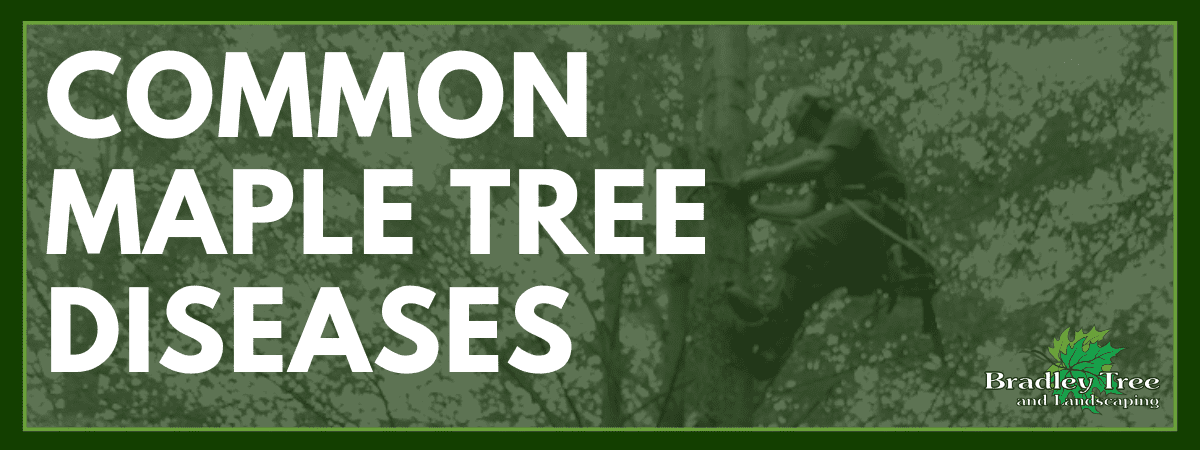
Common Maple Tree Diseases
Maple trees are some of the most common trees in Western New York. Some of the most prevalent types of maples in Buffalo and Western New York are Sugar Maples, Red Maples, Norway Maples, Silver Maples, Hedge Maples, and Japanese Maples. Certain types of trees are more susceptible to specific tree diseases, and we here we want to provide some insight into diseases that may affect your maple trees.
Here are some of the most common diseases that can affect your maple trees.
Anthracnose
Anthracnose is a group of fungal diseases that will affect varying species of maple trees differently. Typically symptoms will become visible in the late spring to early summer, but additional cycles of the disease can demonstrate damage later in the growing season.
Some symptoms you might see with Anthracnose include leaf spots, blighted leaves, young shoots, cankers, and dieback of young twigs and branches. The most common symptoms are large dead areas of irregularity on the leaf that are often V-shaped. When an infection is severe the fungus can cause the entire leaf to look blighted, browned, and/or shriveled. This could appear to be related to drought or heat stress since they can look similar.
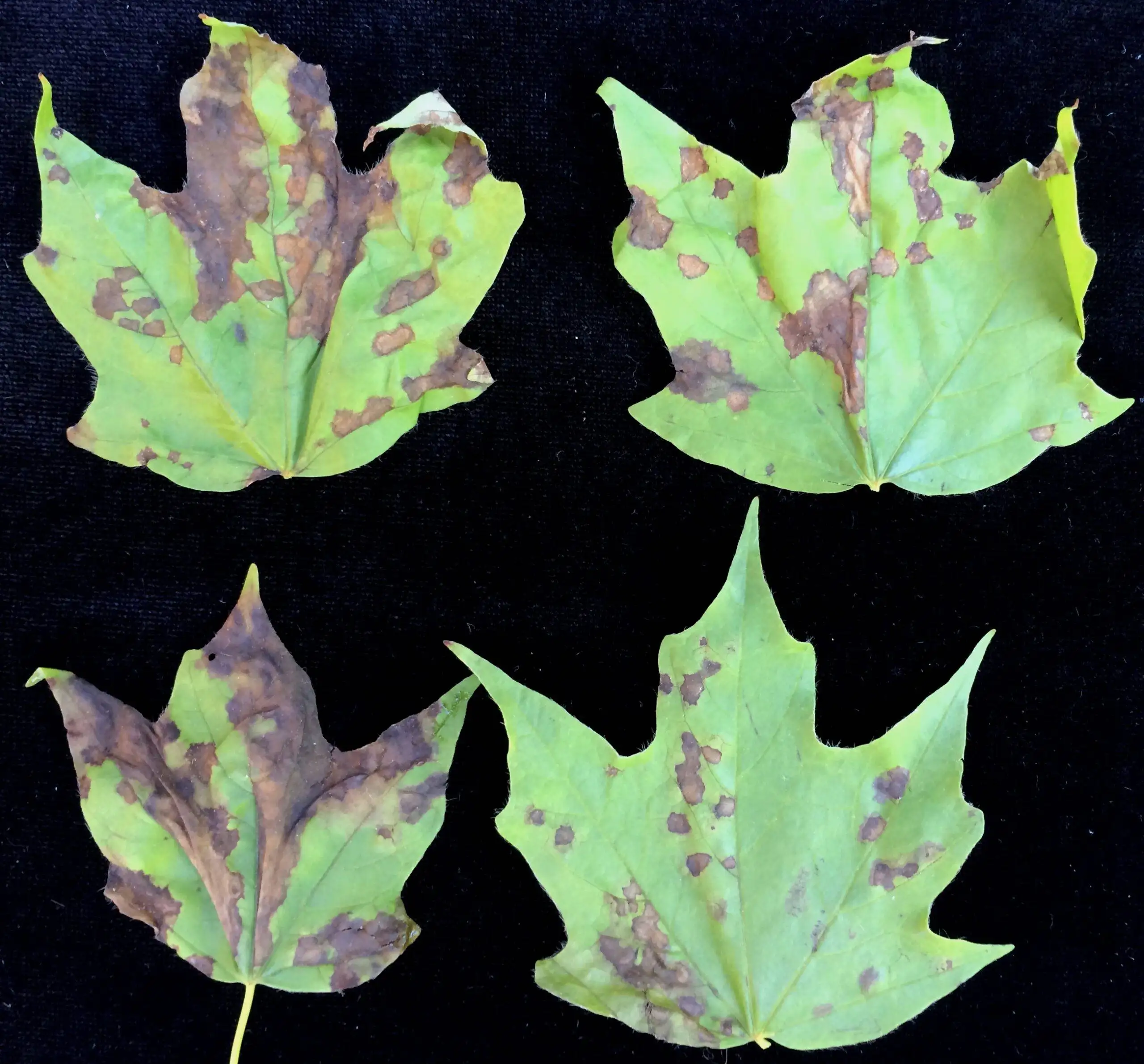
Source- https://ag.umass.edu/landscape/fact-sheets/maple-anthracnose Irregularly-shaped, angular leaf spots caused by Discula on sugar maple (Acer saccharum). Photo by N. Brazee
Leaf Spots & Tar Spots
Both Leaf Spots and Tar Spots will also be caused by fungus. All Maple trees are subject to attack by leaf-spotting fungi. Usually, symptoms of each will appear in mid to late summer.
Leaf spots will demonstrate symptoms of circular and/or irregular spots from ¼ to 1 inch in diameter. You may see spots with brown or tan centers, with purple-brown margins. These are sometimes referred to as “frog eye” symptoms. Small black fruiting bodies may appear on the upper surface of the spots. Leaf spots are typically more severe on red, sugar, and silver maple, but can also appear on Japanese and Norway maple.
Tar Spots will initially demonstrate pale green to yellow areas on the leaves and may seem inconspicuous at first. Over time, the fungus grows inside the leaves, developing into a shiny, slightly raised black spot, much like tar. Depending on the fungal species, the spot may vary in size but usually is up to a ½ inch in diameter. Tar spot can cause early fall coloration and defoliation, especially when the infection is heavy. Norway maple is susceptible to heavy infection.
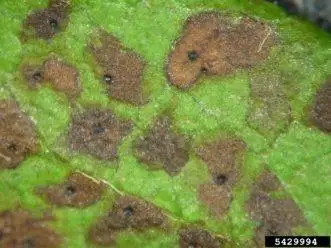
Leaf Spots
Source- https://hgic.clemson.edu/factsheet/maple-diseases-insect-pests/ Phyllosticta leaf spot of maple (Phyllosticta minima).
Photo by Paul Bachi, Bugwood.org
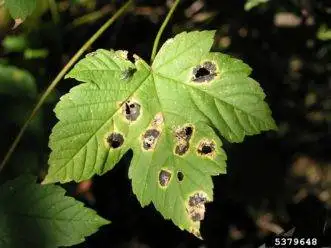
Tar Spots
Source- https://hgic.clemson.edu/factsheet/maple-diseases-insect-pests/ Tar spot of maple (Rhytisma species).
Photo by Andrej Kunca, Bugwood.org
Powdery Mildew
Powdery Mildew can be caused by several different fungi. Unlike many other diseases, powdery mildew will usually develop late in the growing season.
These symptoms are just like how the disease sounds. You will notice a white or gray powdery growth on the leaf surface. You could almost consider them to look “dirty.” Symptoms will typically appear initially on the upper surface of the leaf and may result in premature fall coloration.
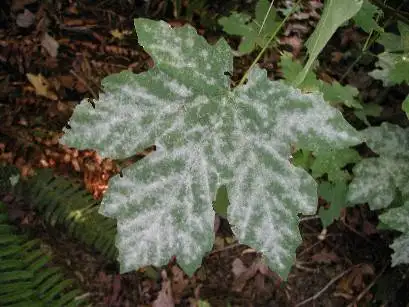
Source- https://agsci.oregonstate.edu/nurspest/diseases/powdery-mildew Photo: Rosetta, OSU
Verticillium Wilt
Signs and symptoms of Verticilllium Wilt will usually occur in mid-summer, especially after periods of hot, dry weather. Trees that may be weakened due to drought or root damage may be more prone to this disease.
The first signs of Verticillium Wilt will be wilting or yellowing of individual limbs or portions of the canopy. This may also be referred to as “flagging.” Fungus enters through the roots and grows up the Xylem, the trees water transport system. This restricts the normal, healthy movement of nutrients and water throughout the inside of the tree. You may notice sparse open areas of the canopy, with undersized or off-colored leaves. Infected trees die slowly or suddently, depending on the extent of the infection, and the overall health of the tree.
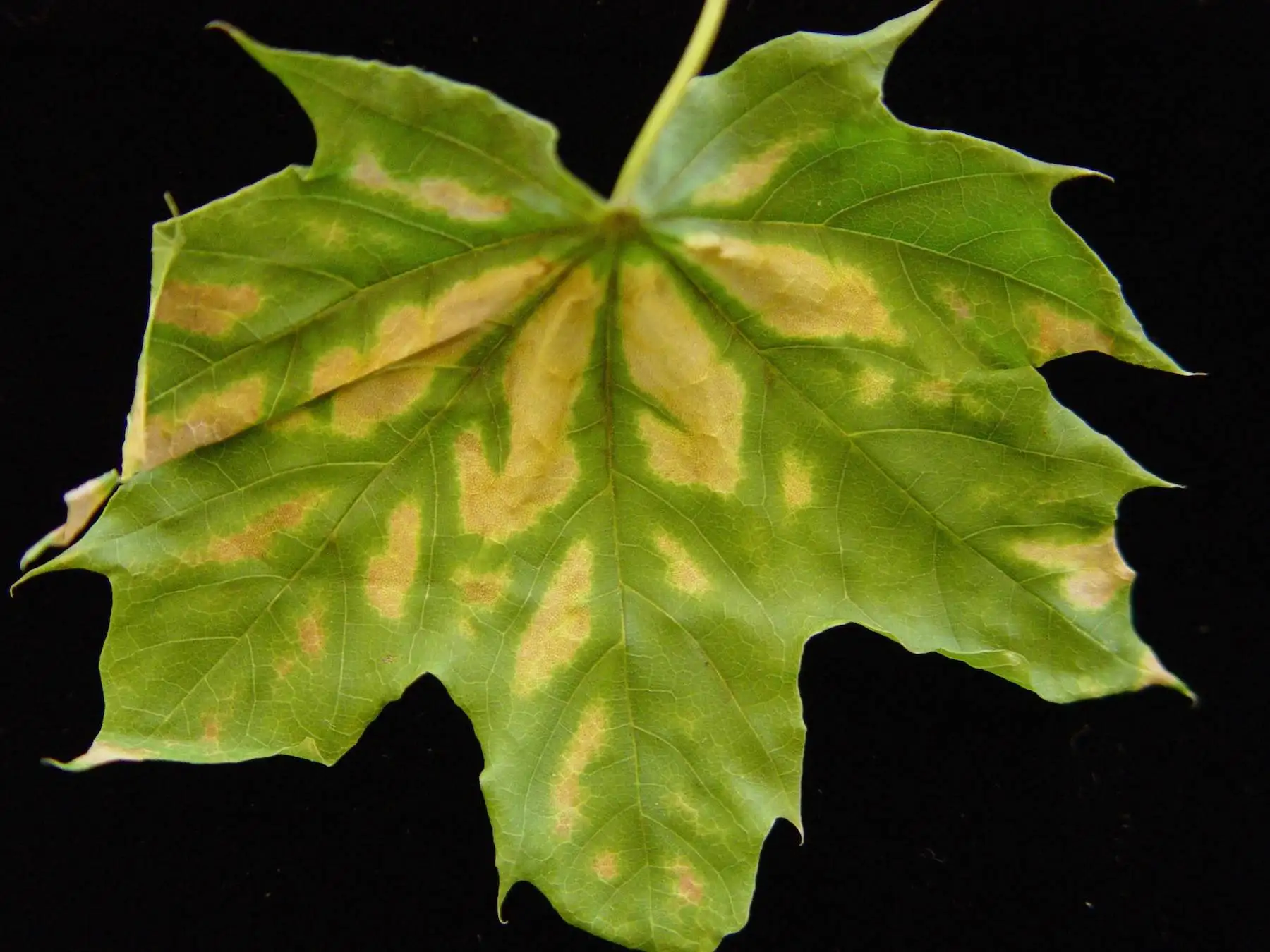
Source- https://www.extension.iastate.edu/news/2005/jun/071602.htm Photo/Article Credit: Christine Engelbrecht
Scorch
Scorch, as you may have predicted, is brought on by drought and heat stress. Scorch will show up in later months of summer, or periods of hot and dry weather.
Signs of scorch include curled or cupped leaves, that may develop brown or dead leaves. Leaves will drop prematurely and shrivel This can also be confused with the aforementioned anthracnose, so a professional will need to give you a full diagnosis.
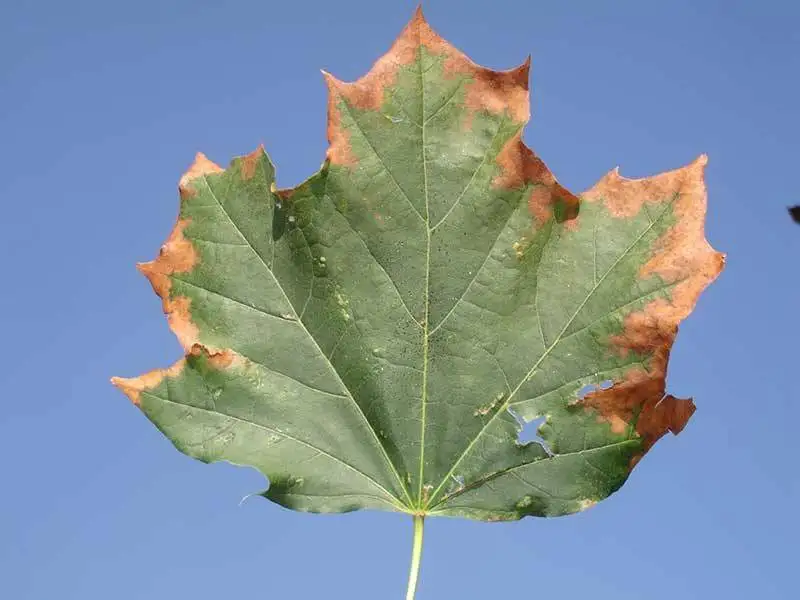
Source- https://www.usu.edu/today/story/ask-an-expert-why-are-my-leaves-turning-brown Photo/Article Credit: Taun Beddes, JayDee Gunnell
Root Rot
Root Rot is caused by different types of fungus and is usually most prevalent in spring when it is rainy and wet. It is also most commonly found in areas that have poorly drained soil areas.
Symptoms of Root Rot will be noticed along the trunk and roots of the tree. The disease will cause “fruiting structures” in these areas and in some cases, “bleeding” cankers on the wood. Root rot fungus will attack the healthy tissues of the tree, leading to a compromised vascular system. This prevents the tree from receiving the water and nutrients it needs to thrive, and unfortunately survive. Root rot is usually a fatal disease that will require tree removal.
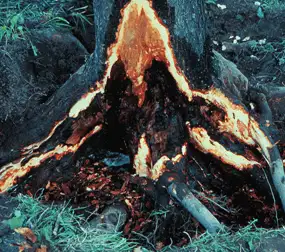
Source- https://hort.extension.wisc.edu/articles/root-and-crown-rots/ Photo/Article Credit: Brian Hudelson, UW-Madison Plant Pathology and Laura Jull, UW-Madison Horticulture
Need Help? Have a Question About Your Maple?
Give Us a Call at 716-537-9129 or Fill out the form below and we will reach out to schedule a time for one of our arborists to come take a look. We will advise you on the diagnosis of your maple trees and the best course of action to ensure they are strong and healthy for years to come.
